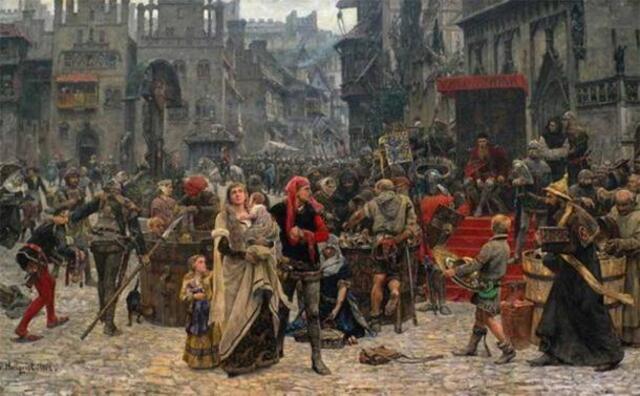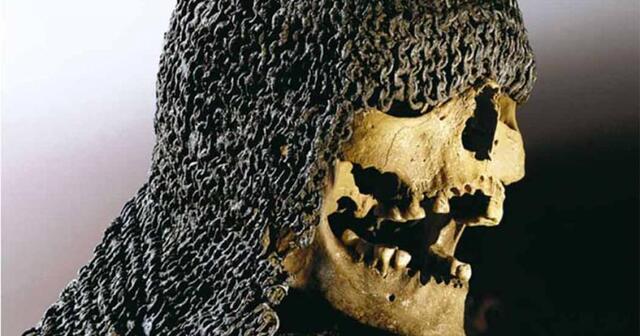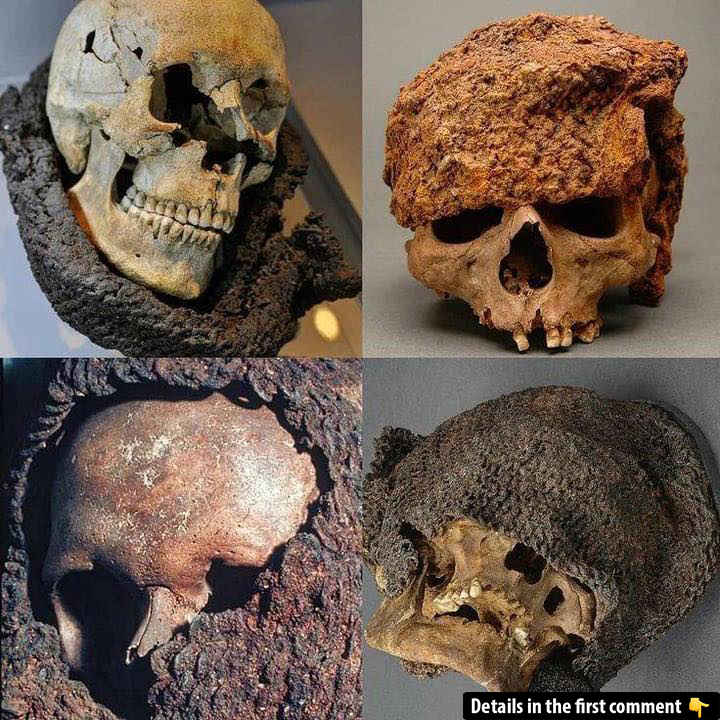In the sweltering summer of 1361, the island of Gotland witnessed one of the most brutal and devastating battles of the medieval period. The Battle of Visby, fought between the farmers of Gotland and the professional army of King Valdemar Atterdag of Denmark, left an indelible mark on history. This horrifying clash, which resulted in the deaths of around 1,800 Gotlanders, marked a pivotal moment in the struggle for control of the Baltic trade routes. Today, through the incredible discoveries made by archaeologists, the battle lives on—not just in history books, but in the bones, weapons, and armor of the fallen soldiers that remain in mass graves beneath the town of Visby.
Background to the Battle of Visby
The Battle of Visby did not occur in a vacuum. Gotland, a strategically significant island in the Baltic Sea, was once a thriving hub for commerce and trade, especially as a member of the Hanseatic League. The League, a confederation of merchant towns, helped foster trade and ensure protection for its members. However, by the mid-14th century, Gotland was losing its position as a central trading power, and this shift did not go unnoticed by the ruling monarchs of neighboring territories.

King Valdemar Atterdag of Denmark had long been envious of the wealth and influence held by the cities of the Hanseatic League. With the League’s growing power, Valdemar’s ambitions to control the area became increasingly urgent. In addition to economic rivalry, personal grievances—such as the mocking songs sung about him by the Gotlanders—fueled his decision to invade the island. By the summer of 1361, Valdemar had assembled a formidable army and set sail for Gotland, determined to claim it for Denmark.
Video
Watch this video from Medieval Dead to explore the buried secrets of the 1361 Gotland Massacre, revealing the tragic history behind this medieval mass grave.
The Danish Invasion
In late July 1361, Valdemar’s forces, numbering between 2,000 and 2,500 men, landed on Gotland’s west coast. Unlike the largely untrained farmers defending the island, Valdemar’s troops were made up of well-equipped professional soldiers and mercenaries from Denmark and Germany. The Gotland farmers, though fiercely determined, were vastly outmatched, with many lacking the necessary combat experience and proper weaponry.
The Gotlanders made their first attempt to halt the Danish advance at Mästerby, in the island’s central region. Despite their efforts, they were decisively defeated, and the Danish army pressed on toward the island’s capital, Visby. The defenders, including men, women, children, and even the elderly, were left to defend their beloved town.
The Battle of Visby: A Desperate Last Stand

The Battle of Visby was fought beneath the very walls of the town, where the Gotlanders made a last-ditch stand to protect their homes. Despite their valiant efforts, the untrained militia was no match for the disciplined, professional forces of King Valdemar. What followed was a massacre. The Danish soldiers methodically overwhelmed the defenders, and the town of Visby was forced to surrender by July 29th, 1361. More than half of the Gotland defenders were killed in battle.
The mass graves that followed are a testament to the horrors of war. The dead were hastily buried in several pits near the battlefield, leaving behind a grim record of the violent confrontation. But it wasn’t until much later that archaeologists uncovered the full scale of this medieval massacre.
Excavation of the Mass Graves
Between 1905 and 1928, archaeologists began excavating the mass graves at Visby. What they uncovered was both chilling and enlightening: more than 1,100 human remains, many still wearing their armor and chain mail, offered an extraordinary glimpse into the brutal nature of medieval warfare. The remains provided crucial insights into the fighting techniques, weapons, and living conditions of both the Gotland defenders and the Danish soldiers.
The excavations revealed injuries that told a harrowing story of the battle. Over 450 wounds had been inflicted by cutting weapons like swords and axes, while another 120 were caused by piercing weapons such as spears and arrows. These injuries gave archaeologists valuable information about the weapons used and how the soldiers fought.

Weaponry and Fighting Techniques
The artifacts recovered from the mass graves, including maces, swords, crossbows, and arrowheads, offer a fascinating insight into medieval combat. The types of wounds on the skeletons indicate the brutal nature of the battle. Some skeletons showed evidence of heavy blows to the head, suggesting that the defenders were struck while trying to protect themselves from overwhelming odds.

The study of these injuries also helped researchers reconstruct the fighting techniques used during the battle. By analyzing the bone fractures, archaeologists were able to understand how the soldiers wielded their weapons and defended themselves. It’s almost as though modern crime scene investigation techniques were applied to a historical battlefield.
Who Were the Defenders?
The mass graves revealed something surprising about the composition of the Gotland defenders. It was discovered that at least a third of the people fighting to defend Visby were not soldiers, but elderly, children, and the disabled. This grim fact illustrates the dire situation the island’s farmers faced, as they had no choice but to defend their homes, even with their most vulnerable members. The presence of so many non-combatants in the battle underscores the desperation of the Gotlanders, who were defending not just their city, but their way of life.
The Discovery of Armour and Equipment

Perhaps the most striking aspect of the Visby excavations was the excellent preservation of the soldiers’ armor and equipment. Items such as mail shirts, coifs, gauntlets, and helmets were recovered from the graves, offering a rare glimpse into medieval military attire. These items provide crucial information about the technology and design of medieval armor, which, while not perfect, was essential for protection in battle.
Among the recovered items was chain mail armor, which was still in excellent condition, allowing archaeologists to study the durability of medieval protection. There were also numerous weapons, including swords, axes, and crossbows, revealing the weapons the Gotlanders used in their defense efforts. Despite the bravery of the defenders, their lack of proper military training and equipment ultimately led to their tragic defeat.
The Victims of the Battle

The human remains uncovered at Visby provide a poignant reminder of the lives lost during the battle. Among the most compelling finds was the skeleton of a young Gotlander, aged 30 to 35, who had been struck from behind, suffering multiple blows to the head from both an axe and a mace. His remains, along with those of many other soldiers, offer not just insight into medieval warfare but also a human connection to the violence and suffering of the past.
While the majority of the fallen were buried quickly and without ceremony, some of the bodies were interred with their armor and weapons, creating a lasting archaeological legacy. The fact that so many of the remains were found in such well-preserved states allows us to understand the personal experiences of the men and women who fought and died in the Battle of Visby.
The Legacy of the Battle of Visby

The Battle of Visby was a tragic moment in history, but it also serves as an important reminder of the destructive power of war. Through the excavation of the mass graves, we now have a detailed understanding of medieval warfare and the human cost of territorial conflicts. The skeletons, weapons, and armor recovered from the battlefield provide a unique archaeological record that continues to reveal new details about the past.
The lasting legacy of the Battle of Visby is not only found in the remains of the fallen soldiers but also in the insights it provides into the medieval world. It is a reminder that the brutality of war is not a relic of the past but a recurring phenomenon throughout history. As we look back on the events of 1361, we are reminded of the high cost of conflict and the importance of understanding the past in order to prevent future tragedies.
Video
Tune into this video to uncover the story behind a medieval massacre, exploring the events that led to this dark chapter in history.
Conclusion
The Battle of Visby remains one of the most significant medieval conflicts in Scandinavian history. Through archaeological discoveries, we have gained a deeper understanding of the violence and suffering that accompanied this battle. The human remains, weapons, and armor recovered from the mass graves offer a poignant insight into the realities of medieval warfare. By studying these findings, we continue to learn not only about the past but also about the enduring human experience of conflict, survival, and loss.



